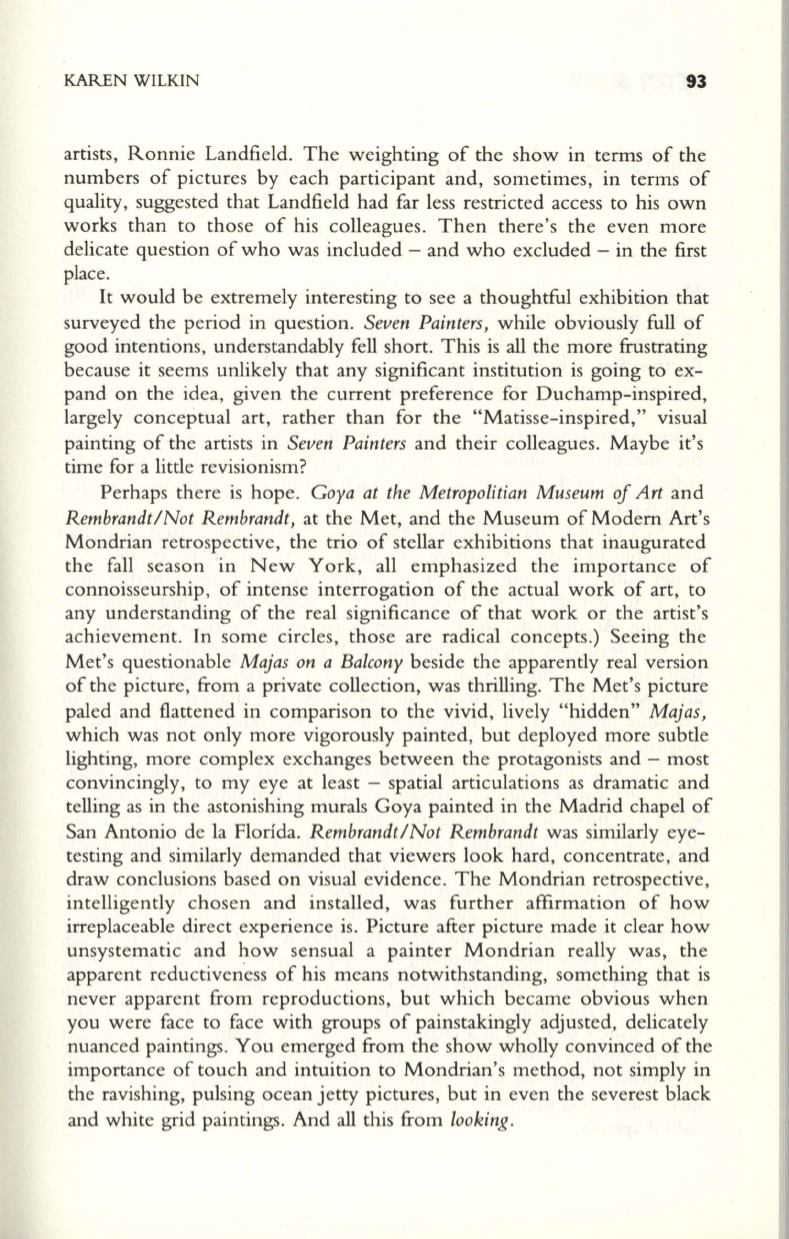
KAREN WILKIN
93
artists, Ronnie Landfield. The weighting of the show in terms of the
numbers of pictures by each participant and, sometimes, in terms of
quality, suggested that Landfield had far less restricted access to his own
works than to those of his colleagues. Then there's the even more
delicate question of who was included - and who excluded - in the first
place.
It would be extremely interesting to see a thoughtful exhibition that
surveyed the period in question.
Seven Painters,
while obviously full of
good intentions, understandably fell short. This is
all
the more frustrating
because it seems unlikely that any significant institution is going to ex–
pand on the idea, given the current preference for Duchamp-inspired,
largely conceptual art, rather than for the "Matisse-inspired," visual
painting of the artists in
Seven Painters
and their colleagues. Maybe it's
time for a little revisionism?
Perhaps there is hope.
Coya at the Metropolitian Museum of Art
and
Rembrandt/Not Rembrandt,
at the Met, and the Museum of Modem Art's
Mondrian retrospective, the trio of stellar exhibitions that inaugurated
the fall season in New York, all emphasized the importance of
connoisseurship, of intense interrogation of the actual work of art, to
any understanding of the real significance of that work or the artist's
achievement. In some circles, those are radical concepts.) Seeing the
Met's questionable
Majas on a Balcony
beside the apparently real version
of the picture, from a private collection, was thrilling. The Met's picture
paled and flattened in comparison to the vivid, lively "hidden"
Majas,
which was not only more vigorously painted, but deployed more subtle
lighting, more complex exchanges between the protagonists and - most
convincingly, to my eye at least - spatial articulations as dramatic and
telling as in the astonishing murals Goya painted in the Madrid chapel of
San Antonio de la Florida.
Rembrandt/Not Rembrandt
was similarly eye–
testing and similarly demanded that viewers look hard, concentrate, and
draw conclusions based on visual evidence. The Mondrian retrospective,
intelligently chosen and installed, was further affirmation of how
irreplaceable direct experience is. Picture after picture made it clear how
unsystematic and how sensual a painter Mondrian really was, the
apparent reductiven·ess of his means notwithstanding, something that is
never apparent from reproductions, but which became obvious when
you were face to face with groups of painstakingly adjusted, delicately
nuanced paintings. You emerged from the show wholly convinced of the
importance of touch and intuition to Mondrian's method, not simply in
the ravishing, pulsing ocean jetty pictures, but in even the severest black
and white grid paintings. And
all
this from
looking .


